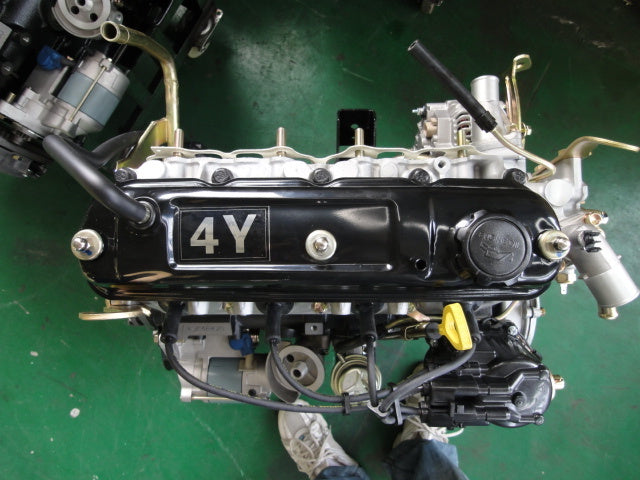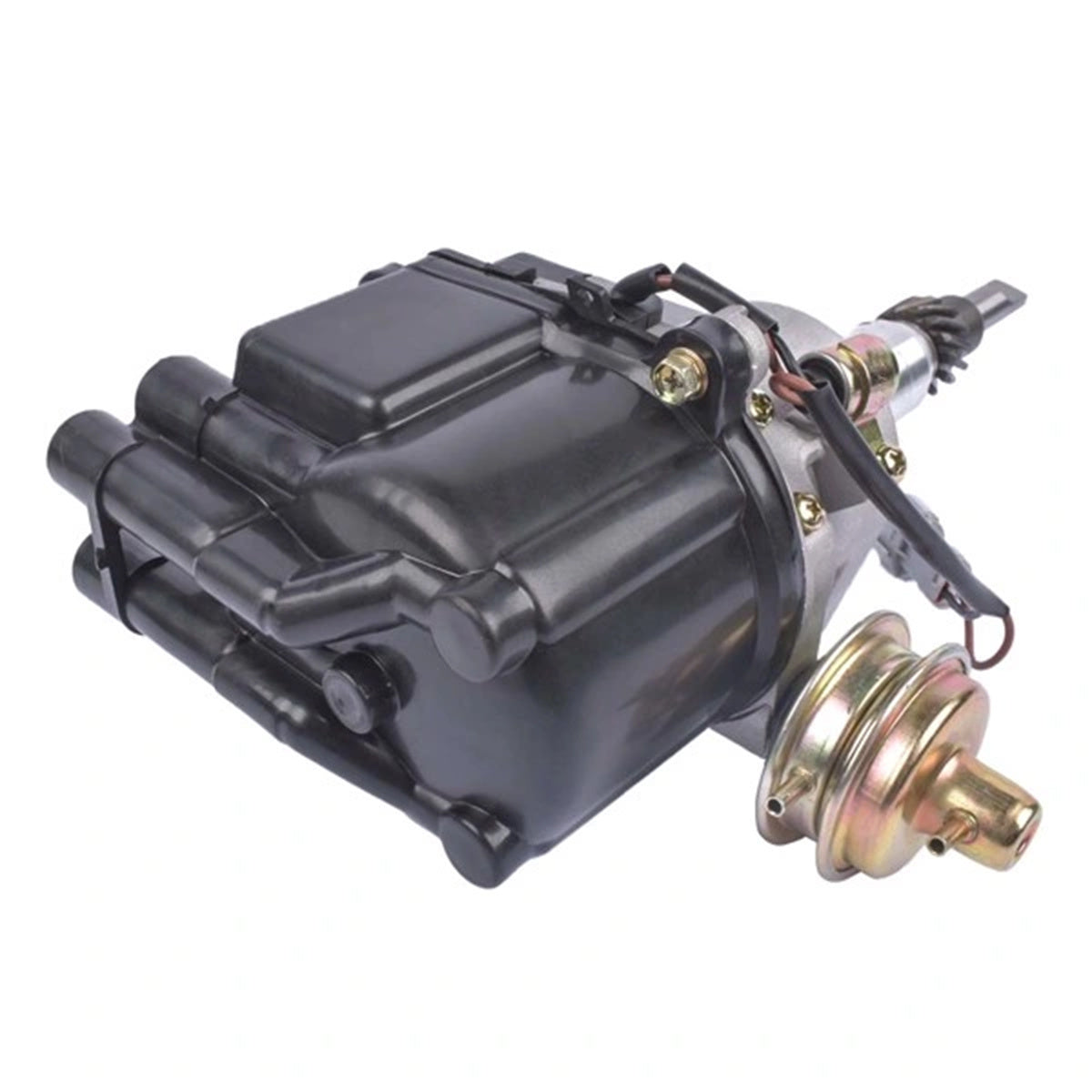Exploring the Various Types of Engine: Which One Fits Your Requirements?
Internal burning engines proceed to dominate due to their reliability, while electric engines are gaining traction for their sustainability. Hybrid engines supply a functional compromise, and diesel engines stand out for their power in demanding applications.

Inner Burning Engines
Internal burning engines (ICEs) are the backbone of modern transport, powering a substantial variety of cars from automobiles to airplanes. These engines run on the concept of transforming fuel right into power through a collection of controlled surges within a burning chamber. The most usual kinds of ICEs include fuel engines, diesel motor, and rotating engines, each developed to meet specific efficiency and efficiency demands.
Gas engines usually utilize spark ignition, while diesel motor count on compression ignition, resulting in distinctive distinctions in fuel effectiveness and power output (4y engine). Rotating engines, or Wankel engines, provide a compact style and smooth procedure, however are much less commonly made use of in mainstream applications
ICEs have actually gone through substantial innovations in innovation, consisting of the intro of turbocharging and fuel injection systems, which improve general effectiveness and efficiency. Regardless of their performance renovations, ICEs encounter increasing scrutiny due to their ecological impact, particularly concerning greenhouse gas emissions.
Electric Engines
As issues about ecological sustainability and fossil gas dependence grow, electric engines have actually become an engaging option to interior combustion engines. These engines utilize electric motors powered by batteries or fuel cells, providing a cleaner and more reliable motive powers.
Among the key benefits of electrical engines is their minimized discharges. Unlike standard engines that burn nonrenewable fuel sources, electrical engines produce no tailpipe emissions, significantly decreasing air contamination and contributing to improved public health. Additionally, the performance of electric motors frequently goes beyond that of interior combustion engines, transforming a higher proportion of power from the source of power into functional energy for activity.
Electric engines are likewise notable for their silent procedure, making them excellent for metropolitan environments. 4y engine. The simpleness of their layout results in less moving components, which can lead to lowered maintenance prices and boosted dependability with time
Nevertheless, obstacles stay, consisting of battery production influences, billing infrastructure, and variety limitations. In spite of these difficulties, the growing financial investment in electrical vehicle innovation and renewable energy resources points toward an appealing future for electric engines, placed to play an important duty in the transition toward lasting transport.
Hybrid Engines
Mixing the benefits of both traditional and electric interior burning engines, hybrid engines represent a functional service in the mission for reliable and lasting transportation. These engines incorporate a gasoline or diesel motor with an electrical motor, enabling improved fuel effectiveness and lowered emissions contrasted to standard vehicles.
Hybrid engines operate in a number click for source of modes, using the electrical motor for low-speed driving and the inner burning engine for greater rates or when even more power is needed. This dynamic operation not just boosts gas economic situation yet additionally adds to a smoother driving experience. Regenerative braking is an additional crucial function, catching energy normally shed throughout stopping and rerouting it to reenergize the battery.

As consumers progressively prioritize eco-friendliness, hybrid engines stand out as a useful option, offering a reliable balance of efficiency, efficiency, and ecological obligation. This adaptability makes them ideal for urban commuting and long-distance traveling alike.
Diesel Engines
Effectiveness and power are hallmarks of diesel motor, which have long been preferred for their toughness and fuel economy. These engines operate the concept of compression ignition, where air is compressed to a heat prior to gas is injected, igniting it without the demand for trigger plugs. This process allows diesel motor to achieve greater thermal effectiveness compared to gas engines, converting into much better fuel mileage and lower carbon dioxide exhausts.
Diesel engines are specifically appropriate for sturdy applications such as trucks, buses, and industrial machinery, where torque and durability are extremely important. Their design normally consists of stronger elements to hold up against the higher pressures created during operation, leading to longer life span and reduced maintenance expenses.

Different Gas Engines
While diesel motor have lengthy controlled the landscape of durable power sources, alternate fuel engines are obtaining grip as sensible alternatives for a much more sustainable future. These engines utilize a selection of gas, such as pressed gas (CNG), hydrogen, propane, and ethanol, intending to lower greenhouse gas exhausts and reliance on nonrenewable fuel sources.
One substantial advantage of alternative gas engines is their prospective to lower carbon impacts. CNG engines release less pollutants compared to standard diesel engines, making them suitable for metropolitan transit systems and fleets looking for to enhance air top quality. Ethanol, stemmed from biomass, not just minimizes emissions yet also sustains farming economic climates.
Hydrogen gas cells represent an advanced growth in this realm, using zero-emission power through a chain reaction in between hydrogen and oxygen. However, obstacles such as infrastructure growth and production prices remain challenges to prevalent fostering - 4y engine.
Final Thought
Internal combustion engines offer reliability, while electrical engines focus on sustainability and lowered maintenance. Crossbreed engines incorporate the benefits of both, boosting performance, whereas diesel engines give superior power and torque for sturdy applications.
Hybrid engines provide a functional concession, and diesel engines stand out for their power in demanding applications. The most common types of ICEs consist of gasoline engines, diesel engines, and rotary engines, each designed to meet details efficiency and effectiveness needs.
Unlike traditional engines that burn fossil gas, electric engines generate absolutely no tailpipe discharges, substantially reducing air pollution and contributing to boosted public health and wellness.Crossbreed engines operate in several settings, making use of linked here the electric motor for low-speed driving and the inner burning engine for higher rates or when even more power is required. Hybrid engines combine the benefits of both, enhancing performance, whereas diesel engines supply remarkable power and torque for durable applications.
Comments on “The Best Maintenance Tips for Maximizing the Lifespan of Your 4Y Engine”